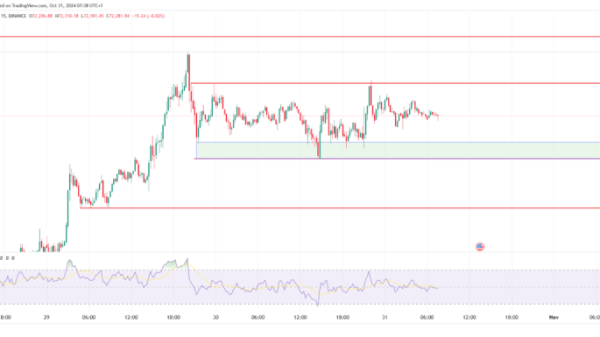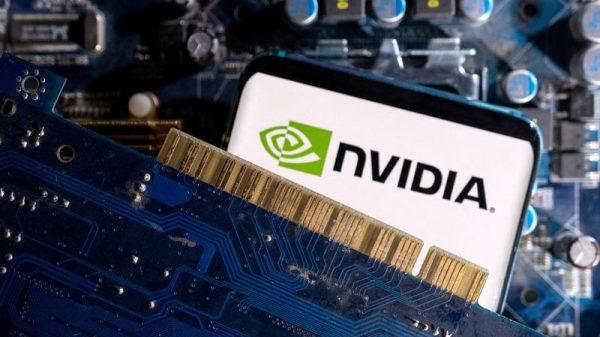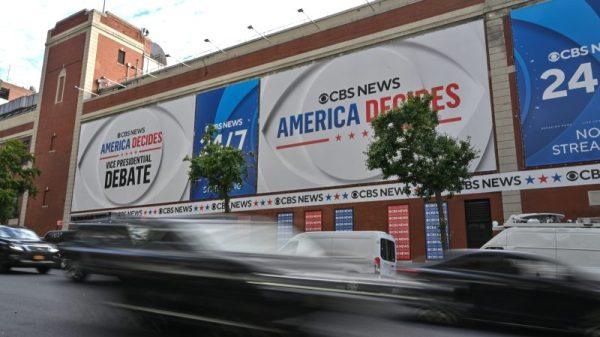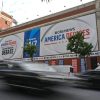Custom Truck One Source, Inc. (NYSE: CTOS) has reported its third-quarter results for 2024, revealing a mix of positive and challenging developments. The company saw a significant increase in rental metrics and overall market conditions, with CEO Ryan McMonagle emphasizing the impact of recent storms on demand, particularly in the utility sector. Rental equipment utilization exceeded expectations, and the company remains optimistic about long-term growth, driven by rising electricity demand and federal infrastructure investments. However, the company also faced a decrease in the TES backlog and revised its revenue guidance downward for certain segments.
Key Takeaways
Custom Truck One Source reported $447 million in Q3 revenue, with adjusted EBITDA standing at $80 million.
The company saw an increase in OEC on rent to over $1.2 billion and a utilization rate surpassing 79%.
Adjusted EBITDA guidance for 2024 is projected to be $340-$350 million, with total revenue expected between $1.8 billion and $1.89 billion.
The TES segment showed a 13% year-over-year increase in equipment sales, reaching $260 million.
The APS segment generated $36 million in revenue but faced challenges with lower rentals and rising material costs.
The company revised revenue guidance downward for ERS and TES segments but maintained the APS revenue guidance.
Custom Truck aims to reduce net leverage below 3 times and improve working capital management.
Company Outlook
Custom Truck is optimistic about future growth, expecting double-digit adjusted EBITDA growth in 2025.
Federal infrastructure investments and rising electricity demand are anticipated to drive growth.
The company will provide formal guidance in March 2024.
Bearish Highlights
There is a decrease in the TES backlog, with levels normalizing to approximately 4.5 months of LTM sales.
The company has revised its revenue guidance downward for ERS and TES segments.
Gross margins in the APS segment were impacted by lower rentals and rising material costs.
Bullish Highlights
The utility sector’s demand has surged due to recent storms, benefiting the company’s rental equipment utilization.
There is ongoing customer demand for 2024 and 2025, with net orders just over $177 million.
The telecom sector within TES is showing increased activity, though it remains a small revenue contributor.
Misses
The average utilization of the rental fleet declined year-over-year to just over 73%.
Gross margin for TES was slightly over 16%, down from the previous year, primarily due to inventory mix changes.
Q&A Highlights
CEO Ryan McMonagle addressed concerns about the TES segment’s revenue expectations but assured continued demand and growth.
There is potential for mid-single-digit fleet growth in the T&D market by 2025.
Gross margins in the APS segment are expected to be in the mid-20% to high-20% range in upcoming quarters.
Custom Truck One Source, Inc. concluded its earnings call with a note of thanks from CEO Ryan McMonagle, who expressed eagerness for the company’s next quarterly update.
InvestingPro Insights
Custom Truck One Source’s recent financial performance aligns with several key insights from InvestingPro. The company’s Q3 2024 results reflect both strengths and challenges, which are mirrored in the InvestingPro data and tips.
According to InvestingPro data, Custom Truck One Source has a market capitalization of $926.73 million USD, with a revenue of $1.8 billion USD for the last twelve months as of Q3 2024. This closely matches the company’s reported Q3 revenue of $447 million and the projected total revenue between $1.8 billion and $1.89 billion for 2024.
An InvestingPro Tip highlights that management has been aggressively buying back shares, which could be seen as a positive signal about the company’s confidence in its future performance. This aligns with the company’s optimistic outlook for future growth, including the expectation of double-digit adjusted EBITDA growth in 2025.
Another relevant InvestingPro Tip notes that the company operates with a significant debt burden. This is consistent with Custom Truck’s stated goal to reduce net leverage below 3 times, as mentioned in their earnings report. The focus on improving working capital management also ties into this objective.
The InvestingPro data shows a strong return of 27.81% over the last week and 18.55% over the last month, which may reflect the market’s positive reaction to the company’s Q3 results and future outlook. However, it’s worth noting that the stock price has fallen significantly over the last three months, with a -18.36% return, indicating some volatility in investor sentiment.
For investors seeking a more comprehensive analysis, InvestingPro offers 11 additional tips for Custom Truck One Source, providing a deeper understanding of the company’s financial health and market position.
Full transcript – Custom Truck One Source Inc (CTOS) Q3 2024:
Operator: Hello, everyone, and welcome to Custom Truck One Source, Inc. Third Quarter 2024 Earnings Conference Call. Please note, this conference call is being recorded. [Operator Instructions]. I will now turn the call over to Brian Perman, Vice President of Investor Relations.
Brian Perman: Thank you. Before we begin, we would like to remind you that management’s commentary and responses to questions on today’s call may include forward-looking statements, which by their nature are uncertain and outside of the company’s control. Although these forward-looking statements are based on management’s current expectations and beliefs, actual results may differ materially. For discussion of some of the factors that could cause actual results to differ, please refer to the risk factor section of the company’s filings with the SEC. Additionally, please note that you can find reconciliations of the historical non-GAAP financial measures discussed during the call in the press release we issued today. That press release in our quarterly investor presentation are posted on the Investor Relations section of our website. We filed our second quarter 2024 10-Q with the SEC this afternoon. Today’s discussion of our results of operations, Custom Truck One Source Inc. or Custom Truck, is presented on a historical basis as of or before the three months ended June 30th, 2024, and prior periods. Joining me today are Ryan McMonagle, CEO; and Christopher Eperjesy, CFO. I will now turn the call over to Ryan.
Ryan McMonagle: Thanks Brian and welcome everyone today’s call. Before we dive into our Q3 earnings, I want to acknowledge the recent storms and their impact on the people and communities in Florida, Georgia and North Carolina. Our thoughts are with everyone affected, and we are committed to ensuring our equipment is available to support recovery and restoration efforts in these regions. In our Q2 earnings report in August, we noted early signs of improvement in our rental KPIs. While we were cautiously optimistic about overcoming some challenges in the transmission and distribution end markets, we weren’t ready to declare a turnaround. Today, I’m pleased to share that we saw continued improvement throughout Q3, in line with our expectations. We ended the quarter with OEC on rents over $145 million higher and utilization more than 800 basis points above where we exited Q2. So far through Q4, these positive trends persist with OEC on rent and utilization currently over $1.2 billion and over 79%, respectively. These trends align with our utility and telecom contractor customers’ expectations of increased activity in the second half of the year and into 2025. Additionally, storm restoration work has contributed to this demand, which we’ll discuss further, later. With the utility end market improving, we now see robust demand across all four of our end markets: utility, infrastructure, rail and telecom, positioning us well for a strong Q4 and a promising start to next year. As we’ve discussed previously, about 60% of our revenue comes from the utility end market, which includes both transmission and distribution work. We are witnessing significant growth in electricity demand driven by AI-driven data center development, manufacturing onshoring, and electrification trends. Recent industry reports project a 24% to 29% increase in U.S. electricity demand by 2035, nearly double last year’s forecast. These trends provide strong tailwinds for our future growth. We view transmission line mile completions and IOU rate case approvals as key indicators of utility end market demand. As supply chain issues resolve, interest rates moderate and regulatory delays subside, we expect to see further improvements. Our recent trends and customer interactions confirm that conditions are normalizing, and we anticipate continued improvement through the rest of the year and into 2025. Chris will detail our ERS segment’s performance, but I’d like to highlight some key trends. For the first time since Q4 last year, we saw sequential growth in rental revenue in Q3, up 5% from Q2. We ended Q2 with OEC on rent just over $1 billion, which improved to $1.17 billion by the end of Q3, and it now stands over $1.2 billion, the highest in over a year. With the recovery in our transmission equipment utilization, we’re seeing mid-70% to low 80% utilization rates across most of our fleet and end markets, demonstrating the long-term resilience of our markets. We estimate that 20% to 30% of the OEC on rents improvement since Q2 is due to storm-related work from Hurricanes Helene and Milton. Given the extent of the damage, we expect much of this equipment to remain on rent for several months. I am incredibly proud of how our entire rental team worked hard to make sure our equipment was ready for the crews heading to help with restoration work for the damage caused by the hurricanes. Additionally, our PTA team worked tirelessly to make sure we can not only provide rental equipment, but we also tooled up and delivered hundreds of tool kits to our customers. We have seen some rate pressure that has impacted our on-rent yield. This was driven by both the mix of the equipment we put on rent and the market environment more broadly. The uptick in rental activity and customer optimism also boosted rental asset sales, marking the second consecutive quarter of sequential improvement with Q3 up 21% from Q2. We’ve leveraged the recent strength in ERS to selectively invest in our rental fleet. At the end of Q3, our total OEC was just under $1.5 billion, our highest quarter-end level, up nearly $36 million in the quarter. We’ve continued to invest during Q4 to ensure we have adequate equipment to meet current and projected rental demand. It is also worth noting that today, our rental fleet is larger than it was when CTOS and Nesco merged in April of 2021. In addition, the rental fleet is younger today, OEC on rent is higher and our on-rent yield is stronger. We are well positioned to capitalize on the growth ahead. Our TES segment saw 13% revenue growth compared to Q3 last year. Year-to-date, revenue is up 8%, following over 30% year-over-year growth in the first nine months of last year. We continue to see strong demand in our infrastructure, rail, telecom and utility end markets, all contributing to robust performance in TES. The early stages of federal infrastructure investment and JOBS Act funding for infrastructure projects continue to positively impact TES demand. These trends combine to result in a 21% increase in net orders compared to Q3 last year. Segment gross margin was down sequentially and year-over-year, impacted by mix and improved inventory levels across the broader industry. We anticipate this will begin to normalize later in 2025. Our inventory investment last year has positioned us to meet strong customer demand for new equipment sales and allowed us to grow our fleet to quickly meet our customers’ demand in our core utility end market. We are confident that our inventory levels will begin to decline in Q4 and return to a more normalized level. We are closely monitoring upcoming chassis emission regulations from CARB and the EPA. We are well prepared for the anticipated demand increase from the new standards between now and 2027. The entire TES team continues to perform exceptionally well, and we are proud of the business we have built. Regarding our 2024 guidance, based on current trends across our business segments, we still anticipate delivering results within the ranges we previously provided, but we are adjusting the top end of our ERS and TES revenue and consolidated adjusted EBITDA guidance ranges. Chris will provide more details, but for 2024, we now expect total revenue between $1.8 billion and $1.89 billion and project adjusted EBITDA between $340 million and $350 million. In closing, I have the utmost confidence in the Custom Truck team. Their hard work and dedication have helped us navigate recent challenges in the utility end market. As we end the year on a stronger footing, we are confident that our current activity levels, combined with strong market tailwinds will drive double-digit adjusted EBITDA growth across our consolidated business next year. We look forward to updating you on our progress on next quarter’s call. With that, I’ll turn it over to Chris to discuss our third quarter results in detail.
Christopher Eperjesy: Thanks, Ryan. For the third quarter, we generated $447 million of revenue, $138 million of adjusted gross profit and $80 million of adjusted EBITDA. While our rental segment KPIs improved in the quarter relative to last year, our third quarter results were significantly impacted by the year-over-year decline in average utilization of the rental fleet to just over 73% from almost 79%. This decrease drove a year-over-year decline in average OEC on rent in the quarter from just over $1.16 billion in Q3 of 2023 to $1.08 billion this past quarter. However, average OEC on rent in Q3 was up sequentially from $1.04 billion in Q2 of this year, reflecting the improved trends we experienced in Q3. The ERS segment had $150 million of revenue in Q3, down from $167 million in Q3 of last year. However, given the improvements in utilization and average OEC on rent in the quarter, rental revenue was up 5% sequentially. In addition, increased overall demand for equipment helped drive a 21% sequential improvement in rental asset sales as well. Both trends resulted in overall revenue growth for the ERS segment increasing for the second straight quarter. Adjusted gross profit for ERS was $88 million for Q3, down from $100 million in Q3 of 2023, but up 5% sequentially. Adjusted gross margin for ERS was 58% in the quarter, down from just under 60% in the same period last year. We maintained rental margins in the expected range for Q3 of the low to mid-70% range and the mid-to-high 20% range for rental asset sales. On-rent yield was over 38% for the quarter, down from almost 41% in Q3 of 2023, impacted by both the mix of equipment we put on rent and the market environment, more broadly. As Ryan mentioned, we continued to invest strategically in and sell certain aged assets from our rental fleet in the quarter. We added equipment and product lines in end markets where we are seeing sustained levels of demand from our customers. Net rental CapEx in Q3 was $57 million, and our fleet age improved slightly to 3.3 years. Our OEC in the rental fleet ended the quarter at $1.49 billion, up $28 million versus the end of Q3 of last year and up sequentially versus the end of Q2 as well. A month into Q4, our OEC currently stands at over $1.5 billion with total utilization at over 79%. We expect to continue to invest in the fleet for the remainder of 2024, but as we discussed last quarter, we have scaled back our expected growth CapEx given the trends we experienced over recent quarters in the utility end market. However, we have the inventory to pivot and grow the fleet beyond current expectations to the extent such investment is supported by our customers’ demand. In the TES segment, we sold $260 million of equipment in the quarter, up 13% compared to Q3 of last year and up more than 5% sequentially from last quarter. Q3 represented our second highest level of TES sales in our history. Gross margin in the segment was slightly over 16% for the quarter, down from Q3 2023, but in line with our expected margin range for the segment. TES gross margin in the quarter was impacted by mix and improved inventory levels across the broader industry. TES backlog continued to moderate, ending the quarter at just under $400 million. Strong levels of production and new equipment sales in the quarter allowed us to make headway towards reducing our backlog to a more normalized level, which currently stands at more than 4.5 months of LTM TES sales. This is down from a peak of more than 12 months in early 2023 and consistent with our targeted historical average of four to six months. Net orders improved versus Q3 of last year to just over $177 million, which is down marginally on a sequential basis. Despite the reduction in our backlog, ongoing feedback from our customers regarding their equipment needs for the remainder of the year and into 2025 provides us with confidence that we will continue to see revenue growth in TES. Our strong and long-standing relationships with our chassis, body and attachment vendors continue to be an important driver of our record TES production. Our intentional inventory build throughout 2023 and into 2024 positions us well to meet our production, fleet growth and sales goals for the coming quarters. Our APS business posted revenue of $36 million in the quarter, up marginally from Q3 of last year. Adjusted gross profit margin in the segment was 23% for Q3. Overall, in Q3, the APS business was impacted by a decrease in rentals of tools and accessories, which were affected by the previously discussed utility end market softness as well as higher material costs. Borrowings under our ABL at the end of Q3 were $628 million, an increase of $41 million versus the end of last quarter, primarily as a result of the increase in inventory and the lower-than-anticipated adjusted EBITDA performance in the quarter. We expect to begin to see a meaningful reduction in inventory levels in Q4 and into next year, which should contribute to reducing the borrowings on the ABL and result in lower balances on our floor plan lines. During Q3, we upsized the size of our ABL facility by $200 million to $950 million and extended the maturity to August 2029. As of September 30, we had approximately $320 million available and over $190 million of suppressed availability under the ABL. With LTM adjusted EBITDA of $356 million, we finished Q3 with net leverage of 4.4x. As we complete Q4 and head into next year, we expect that reduced inventory levels and floor plan balances as well as our returning to growth and the trend towards lower interest rates will all contribute to increased levered free cash flow generation in the coming quarters, which we intend to use to reduce our net leverage. Achieving net leverage below 3 times remains a primary and important goal for us. With respect to our guidance, despite improvements in our ERS segment KPIs since the end of Q2, we expect to experience the continued year-over-year softness in used equipment sales that we have experienced year-to-date. As such, we are reducing the top end of our ERS revenue guidance by $25 million. For TES, while increased production has allowed us to continue to deliver more vehicles and grow revenue in 2024 compared to 2023, some of our customers are choosing to delay certain purchase decisions influenced by both their expectation of lower interest rates and the uncertainty surrounding the upcoming election. As a result, we are lowering the top end of our revenue outlook by $75 million. For APS, we are affirming the existing revenue guidance range. Reflecting those changes, our updated guidance for our segments is as follows: we expect ERS revenue of between $610 million and $625 million, TES revenue in the range of $1.05 billion to $1.115 billion and APS revenue of between $140 million and $150 million. This results in total revenue in the range of $1.8 billion to $1.89 billion. We are projecting adjusted EBITDA in the range of $340 million to $350 million. Also, we now expect to deliver a net leverage ratio that will be flat to a modest decrease from current levels by the end of the fiscal year, but expect further progress in fiscal 2025 with our stated goal to achieve a net leverage ratio below 3 times as we see the benefits of recent working capital management initiatives take hold. In closing, I want to echo Ryan’s comments regarding our continued strong business outlook. Despite the demand weakness we experienced over recent quarters in certain utility markets, we continue to be optimistic about the long-term demand drivers in our industry and our ability to return to double-digit adjusted EBITDA growth next year. With that, I will turn it over to the operator to open the line for questions.
Operator: Thank you. [Operator Instructions]. Your first question comes from Michael Shlisky from D.A. Davidson. Your line is open.
Michael Shlisky: Can you hear me okay? Can you maybe provide first some comments on what you mentioned on the used market? Is it pricing or volumes that’s affecting that business? Or perhaps there’s just not the right assets for sale that people are looking to buy right now? Just some more comments as to what’s been holding that back? And do you think that the issues will be kind of done with by the end of the fourth quarter?
Ryan McMonagle: Yes. I think we’re seeing some demand on used. So I think we are seeing good growth sequentially in the used market there. So I think that’s been positive. I think broadly, there is a little bit of pricing pressure there, Mike, which is what we’re managing through and dealing with. But I think that it will be — I think the fourth quarter is typically the biggest quarter from a buy perspective there. So we think it will continue to improve in the fourth quarter. And then I also think that’s one area that there is more interest rate sensitivity. So, I think as rates continue to lower, I think that will be a good trend for the used market as well.
Michael Shlisky: Got it. And then touching on fleet utilization, certainly, it seems like things have been trending in the right direction for quite some time now, a month or two at least. I think you said, both of you guys in your comments, each of you said that you’re currently seeing 79% or even a little bit higher than that. Do you think 79% or 80% is kind of where you want to be at this point? I’m a little bit worried of another 85%, 86% quarter coming up and the challenges that that brings and the expectations that that brings from the market. Just can you kind of tell us a little bit about how high do you want it to go, and kind of what can you do to keep things in a more reasonable range versus last time around?
Ryan McMonagle: Yes. No, it’s a great question, Mike. And yes, look, I think the most important point is that we’re seeing utilization return in line with what we expected, so later in the third quarter, which is what’s happening. And as we — I think both of us said, it’s holding into October. So, I think you’re right. I think that high 70s is a very good spot to remain, and so — which is consistent with where we are now, too. So I think kind of that high 70s, low-80 feels like a really good spot to maintain. And it seems to be what the market is dictating. We can use the levers of the fleet size and pricing kind of where that makes sense to attempt to keep utilization there. But the most important part is that the underlying business and the underlying demand has come back, like we expected it to at the end of this year and we are starting to feel, as we said with our comments, starting to feel pretty good about what that will imply for 2025 as well.
Michael Shlisky: Great. I also wanted to touch on the Class 8 vocational truck demand patterns that we’re seeing out there. I mean, from an industry perspective, I think orders are at an all-time high. We’re seeing some of the best demand we’ve ever seen in that business on an industry-wide basis. I’m curious if Custom Truck is also making pretty big orders here for next year. As you guys know, you’re among the biggest if not the biggest Class 8 truck buyer out there. I guess I’m curious, either one, is there any kind of emissions pre buy already starting? Are the orders already starting to come in now? Are folks out there just seeing a really strong year in ’25 and just want to buy more? Or is perhaps even Custom Truck isn’t even a part of this and you’ve got a more normalized order pattern. So just anything you can kind of tell us about chassis supply orders for ’25 for the chassis would be appreciated.
Ryan McMonagle: Yes. No, it’s a great question, and we’re obviously very close with all of our OEMs as it comes to our orders, especially around Class 8 chassis. But it feels like there’s good availability right now heading into the beginning of 2025. We think that later in 2025, you could start to see some of the pre buy dynamic and so look, I think that’s where our great relationships with our OEMs on the chassis side, I think, will be valuable. But right now, it feels like there is good availability, and we’re listening closely to what — when the pre buy will really begin and what will be the mix between vocational trucks and the freight side to understand kind of what that dynamic will mean for us later in the year, next year in 2025.
Michael Shlisky: Just to kind of clarify, what’s currently happening, the very strong orders across the sector in Class 8 vocational trucks isn’t necessarily the pre buy happening already. Maybe there is some customers out there that are worried about capacity for their — just for their regular growth business? Or I’m trying to make sure that there’s no giant order that Custom Truck made to — that will require us some working capital in the first part of ’25 and that Custom Truck is the reason why we see such strong industry-wide orders. Is it you or somebody else out there?
Ryan McMonagle: Yes. No, we are not planning on a significant pre buy at the beginning of 2025. We’re still seeing good availability with our partners there and so, as we said, we’re actually seeing inventory come down through Q4 and think that trend will continue and normalize right in the beginning of 2025 as well.
Michael Shlisky: Outstanding. I will pass it along. Thanks so much.
Operator: Your next question comes from Justin Hauke from Baird. Your line is now open.
Justin Hauke: I’ve got kind of a two-part question, I guess, I think they’re kind of combined together. But I wanted to — it’s great to see the rental demand pick up. I mean, that’s really clear from your commentary on results and utilization. When you’re talking about the double-digit adjusted EBITDA growth for 2025, I was hoping to kind of maybe better understand the algorithm to get there. And I guess the reason I ask is, given the pressure on the sales side that you’re signaling here for 4Q and the fact that backlog is $300 million below what it was at the end of 2023 going into 2024. I’m just trying to understand kind of the revenue expectation for the TES segment and if that’s going to be down, what are the kind of the factors that drive the double-digit adjusted EBITDA growth for ’25?
Ryan McMonagle: Yes. No, that’s a great question, Justin, and thanks. And look, we are still seeing growth on the TES side of the business. We’ll have formal guidance, obviously, out when we report Q4 in March, so we’ll — by segment. But we’re still seeing good demand on the TES side. So backlog has normalized, that is true. Over the history of Custom Truck, having backlog in a four-to-six-month range has been historically where we’ve been, and we’ve delivered growth with that and so, we think that will be the case. So we think Q4 will be a growth quarter for the TES segment and we anticipate that ’25 feels like it is shaping up to see growth on the TES side of the business as well. Certainly, with some of the questions Mike was asking about the pre buy too, so that will be interesting to figure out and obviously, with a few more months, we’ll have better data to share with you all about that. But we’re still seeing growth there. But you are absolutely correct, the backlog has come down, but it’s really just reverted to what we’ve always talked about as normal, which is that four-to-six-month time period. I think where we said that there was some pressure was on pricing. That’s true on both the rental business. When we talk about our ORY, that is down a little bit, and it’s also true on the TES business where we mentioned the gross margin is down a little bit. So we’re seeing that — on both segments, we’re seeing that as a function of mix. in terms of what we’re selling and who we’re selling to, but then we’re also seeing a little bit of just margin or pricing pressure too, just from the overall market as inventory has continued to build in the third quarter and into the fourth quarter as well. Does that help you, Justin?
Justin Hauke: Yes. I mean, I guess if I can summarize, and obviously, you’re not giving ’25 guidance, but all else equal, as you stand right here, you would assume that you will grow off of these levels in the TES segment in 2025 with the backlog you have right now?
Ryan McMonagle: Yes.
Justin Hauke: Okay. And then I guess my second question is just on the ORY, why the lower rates. When you say mix, it is — I don’t really know what you mean by that. Is that some of the storm work that came in that was one-time that’s lower margin maybe relative to your equipment or what? What is that?
Ryan McMonagle: Yes. No, that’s a good question. And, yes, I think mix for us means just the mix of equipment that is going out on rent, Justin. So, I think we’ve talked about in the past that some of our distribution equipment is at a lower ORY than some of our vocational equipment as an example and so there’s just some inherent mix between distribution and even transmission that’s a slightly higher ORY. So some of it is just that, some of it is the customers that we’re renting to as well. But when we talk about mix, it’s both of those things, and some of that is — it just occurs kind of during the course of the year as well.
Justin Hauke: Okay. That’s all I got for right now. Thank you.
Operator: Your next question comes from Nicole DeBlase from Deutsche Bank.
Nicole DeBlase: This is Naim Kaplan on for Nicole. So the ERS segment has been — could you hear me?
Ryan McMonagle: Yes.
Nicole DeBlase: Okay. Great. Yes, so the ERS segment has been challenged this year and your midpoint revenue guidance implies 27% quarter-over-quarter growth in the fourth quarter. So, wondering how much of this is underwritten by the growth in OEC on rent that you’ve already seen? We’re just trying to understand the outlook here.
Christopher Eperjesy: I want to make — this is Chris. I want to make sure I understand your numbers. You’re talking about ERS segment because I think the low end of our guidance would effectively be flat year-over-year and the high end would be up a couple of percentage points. So I’m not sure where the 27% is coming from. Unless you mean sequential.
Nicole DeBlase: Sorry, quarter-over-quarter. Yes, yes, quarter-over-quarter.
Christopher Eperjesy: Yes. And so, as we talked about, we did see a pretty decent rise in OEC on rent through Q3, but certainly, at the end of Q3, it accelerated, and that’s continued into October. So the answer is yes. I mean, it’s going to be what we’ve seen over the past 8 weeks on OEC on rent.
Ryan McMonagle: And then, the other thing I’d add to is rental sales. Q4 is typically a strong quarter from a rental sales perspective. And so, we’re anticipating that that will be up as well, sequentially.
Nicole DeBlase: Okay, got it. And could you comment on what you’re seeing in telecom within TES? Our understanding is that the investment there is pretty weak. But you mentioned continued strength in the press release.
Ryan McMonagle: Yes, it’s a good question. Look, that’s a small segment for us, but we are starting to see a lot more activity in telecom. We are seeing some larger orders, both on the rental side for additional telecom equipment to be rented, and we are seeing more sales activity. But again, for us, that’s a very small segment. It’s less than 5% of our revenue. And so some of that will just be growth from a market share perspective as well.
Nicole DeBlase: Okay. Thanks. I appreciate. I will pass it on.
Operator: [Operator Instructions] Your next question comes from Tami Zakaria from J.P. Morgan. You line open.
Tami Zakaria: Hi. Good morning. Thank you so much. So, my first question is a little forward-looking. How are you thinking about growth CapEx and OEC growth as you look out to next year? Because it seems like T&D end market conditions are finally looking up. So, any thoughts you can share how you’re thinking about it for next year or maybe next couple of years? There’s a lot of talk around power generation, power demand growth. So, any color from your side?
Ryan McMonagle: It’s a great question, and it is encouraging to see how the T&D market is coming back, Tami. So I think we’re working through kind of our formal guidance, obviously, for next year now, but I think numbers that are somewhat consistent with what we’ve talked about in the past, kind of that mid-ish single-digits from an overall fleet growth perspective feels reasonable as we’re beginning to do our planning for 2025, and we’re watching kind of how demand on T&D is coming back. But we’ll have formal guidance, I think, in March when we announce formal guidance. But it does feel good, and I think the underlying demand drivers there, Tami, are certainly encouraging as we think about T&D demand heading into 2025.
Tami Zakaria: Got it. That’s helpful. And my second question is on parts. Gross margin came in a little lighter than what we were thinking. Anything to call out there and how to think about gross margin for APS as we look through the next few quarters?
Christopher Eperjesy: Yes. Tami, it’s Chris. I think we said in our formal comments, we have seen some of the same impact we’ve seen on rental within APS in terms of our rentals there, which tend to have higher margins. So part of it is mix, but we have also seen some increase in our overall costs there. I think continuing to model in that mid-20% to high 20% is kind of the best way to look at it. We continue to prioritize, as we’ve talked about in the past, our service network really to keep the fleet going as opposed to third-party service. I think you can continue to expect a lot of that in ’25 as well. So while we’re expecting growth, I think that mid-20s continues to be kind of the number I would model.
Tami Zakaria: Understood. Thank you.
Operator: We don’t have any pending questions as of the moment. I’d now like to hand back over to the management for final remarks.
Ryan McMonagle: Great. Thanks, everyone, for your time today and your interest in Custom Truck. We look forward to speaking with you on our next quarterly earnings call and in the meantime, please don’t hesitate to reach out with any questions. Thank you, again, and have a great day.
Operator: This concludes today’s call. [Operator Closing Remarks].
This article was generated with the support of AI and reviewed by an editor. For more information see our T&C.






































